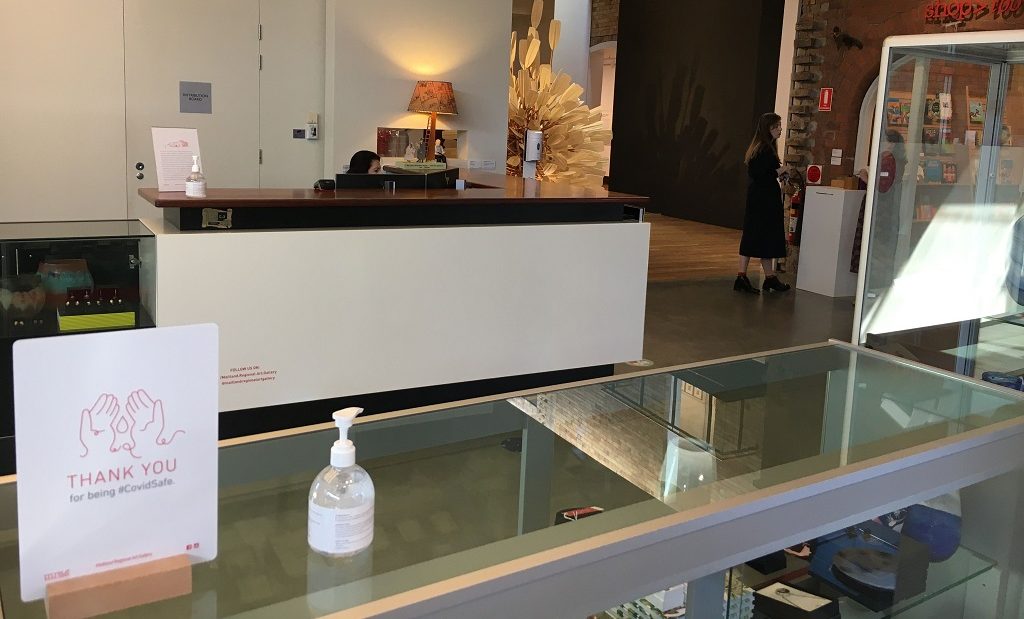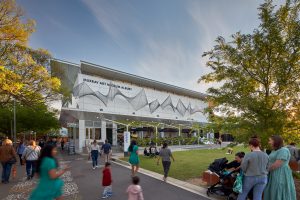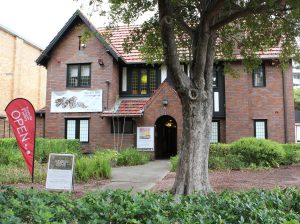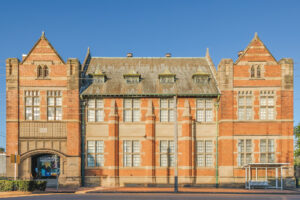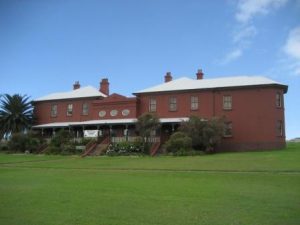Museums and galleries across the state are now re-opening to the public. However, it’s not been a return to normal. To find out more, we spoke to a range of museum and gallery personnel about their experiences so far.
M&G NSW: What were some of the difficulties and challenges you faced with re-opening after such a prolonged shutdown?
Bree Pickering, Director, Murray Art Museum Albury
Re-opening was actually the least challenging part of the shutdown for us! It was a relief to re-open the doors and have at least some of the team engaged in reasonably normal tasks and interfacing with our community, which is such an important part of what we do. The closure period was challenging as we had to rapidly adjust the museum on what felt like a daily basis – knowing that we had a responsibility to support our community through such a challenging time – from implementing the shutdown, communicating with visitors, students, artists and other institutions about cancelled programs, creating a ‘digital’ museum, and reprogramming for an unknown future opening date – alongside home schooling and the care of young children. But the team also felt that still having a job meant we were/are all in a pretty good position! In terms of implementing government restrictions and guidelines, the lack of clarity was challenging to navigate but the actual implementation, once we had the information, was relatively straightforward. It has been a little more difficult to explain to visitors why they are required to behave differently in the museum than they are in shops and other spaces!
Bethany MacRae, Coordinator, Cultural Services, Hurstville Museum and Gallery
The re-organisation of the exhibition schedule, which is planned years in advance, has been the most challenging aspect of the COVID-19 closure. The uncertainty of when Hurstville Museum & Gallery would re-open, and what re-opening would look like, was very difficult to plan for.
Initially, we were working towards a July opening. We came up with the concept for an experimental exhibition, Artbomb, which would see local artists creating work live in our space, in order to fill the exhibition gap created by the closure. We then needed to bump this forward a month when re-opening in June was announced and we were able to work with the artists to do this. The exhibition is currently underway. We have had to reschedule travelling exhibitions, as well as the exhibitions within our community art spaces, impacting these other organisations and artists.
We have implemented new measures to ensure the safety of visitors and staff within the Museum & Gallery, including maximum numbers per gallery space, sneeze guards at service points, closing some interactive exhibition elements, increased cleaning regimes, and providing hand sanitiser for visitors.
The closure period was challenging as we had to rapidly adjust the museum on what felt like a daily basis – knowing that we had a responsibility to support our community through such a challenging time...
– Bree Pickering, Director, Murray Art Museum Albury
Gerry Bobsien, Director, Maitland Regional Art Gallery
Trying to open the doors again to the physical world while still providing great digital content proved a juggle!
The shutdown gave us the opportunity to develop new content and there was the expectation by our audience and a very strong motivation by the team to keep engaging in this way while at the same time getting back to the business of welcoming people through the doors again.
The June 1 date came around a little quicker than we anticipated. This put pressure on some of the building remediation work we promptly scheduled while shut.
The exhibitions we have at the moment have significant interactive elements and trying to determine how and when we can touch things again is a little muddy. On the one hand, we adopted guidelines for the retail sector where it is fine to sterilise and touch the goods (which we do in the shop). However, this does not make sense then when you walk two metres onto the gallery floor where all touchpoints are removed and barriers placed in front of our interactive exhibits. Like all sectors, getting clarity around restrictions was challenging. This proved to be an area where we could not manage our own risk.
The registration process is again something new for our visitors and managing this process was an added restriction we hope to see lapse once it is safe to do so. Overall, we have opened slowly and carefully, making sure our staff and visitors feel safe along the way. There is still a level of fear in the community and this is slowly shifting as we adapt to moving out in public places again. One of the key challenges for us is the absence of onsite public programs. Our creative space for workshops, education programs and community events has been shut for weeks and this is a vibrant and strategically important part of our operation. One of the most challenging aspects of the prolonged shutdown has been the impact on the artists in our program, the artisans who we sell through our shop, the tutors and our casuals.
Luke Grealy, Manager, Museum of the Riverina
The main challenges were logistics, installing sanitiser stations and appropriate signage at entries and throughout the museum, and removing interactive items from exhibitions to reduce public contact. Work was needed to re-schedule staff rosters. Our loss of income was minor.
Another challenge was re-gearing from planned online exhibitions and returning to physical exhibitions that were previously scheduled.
Overall, we have opened slowly and carefully, making sure our staff and visitors feel safe along the way.
– Gerry Bobsien, Director, Maitland Regional Art Gallery
Roxanne Fea, Curator, La Perouse Museum
The disruption to the La Perouse Museum and its community services by the pandemic were profound, immediate and will have long-lasting effects, but they also spurred a good time for reflection and assessment (and surprisingly a lot more work!). Like all public institutions, we faced many challenges, starting with disruption to programming, exhibitions, education, general visitation and a loss of engagement with our creative community, who are very dependent upon the LGA for employment and income.
As a Council facility, we needed to continue to project to the community a sense of stability, a source of information, and continue to deliver cultural services in other ways beyond physical visitation. One major challenge and now, a positive outcome, we accelerated the development of our online services during the closure and now plan to provide ongoing programming while people remain unsure or unable to physically visit us. We have been given the go-ahead to develop a standalone Museum website (a Randwick Council sub-site), and have also developed a virtual tour template for our new temporary shows.
Talking with other Museums and with Council Risk teams, we developed a Re-opening Plan that was compliant, flexible, and that protected staff and collection as well as our guests. Signage, cleaning, hygiene and documentation have become a major focus and our challenge has been to provide a physically accessible and enjoyable space that is not overwhelmed by COVID-19 information and procedures; people come to museums to escape, to learn and to socialise and enjoy themselves and not preferably to be bombarded by signage and invigilators! We have also seen the closure of some smaller spaces and galleries that do not currently meet COVID-19 protocols.
M&G NSW: What long term impact do you think the shutdown will have on your operations in the near future?
Bree Pickering, Director, Murray Art Museum Albury
It is so difficult to know. We can expect lower income from earned sources at least through the next financial year. But it’s difficult to gauge the long term impact on government spending and philanthropic distributions and therefore have any idea what that might mean for our forward budgets. We expect ongoing adjustments will be required to both the museum’s base operations and to its broader role in our changed community.
Bethany MacRae, Coordinator, Cultural Services, Hurstville Museum and Gallery
Hurstville Museum & Gallery has opened with reduced Saturday hours and has currently suspended the volunteer invigilation program. As a result of the COVID-19 shutdown, many of our operations were re-examined to see how they could work in a social media context, in particular, our public programs. We have currently re-opened with no organised public programs and building the confidence with our community to return to our space will be a challenge. Visitor numbers will be impacted and school audiences, which make up a large part of our revenue, are unable to visit for the remainder of the year. We have taken this opportunity to promote our hireable kits – Reminiscing Session kits (for use with seniors’ groups) and Museum on the Move kits (for school children) – to our community, and have implemented a quarantine period upon return of these kits. Major delivery projects, such as the implementation of projects from our Cultural Strategy and the installation of public artworks, have also been delayed, impacting Council’s overall delivery plans.
Visitor numbers will be impacted and school audiences, which make up a large part of our revenue, are unable to visit for the remainder of the year.
– Bethany MacRae, Coordinator, Cultural Services, Hurstville Museum and Gallery
Gerry Bobsien, Director, Maitland Regional Art Gallery
One of the enduring impacts of this shutdown was the delivery of broad and engaging digital content. We aim to maintain this MRAG ‘home delivery’ service in the future in some way.
How will we engage with interactive installations and programs in the future? This is something we need to consider carefully and an area that will need further attention across the sector as we plan our future programs.
Again, some consistency across government guidelines may help here, the same risk approach to schools, playgrounds and retail could surely be adopted for touchpoints at museums and galleries?
Our accessibility programs (sensory and audio tours) have also been impacted and this will need a completely new approach in the future. We will need to find an innovative way to adapt our accessible program with new technology and services. Our biggest challenge for the future is building momentum again and revitalising our education and public programs to see visitors return. Students are a core focus for us and we will need to build trust with educators that this is a safe space for students to come back to.
Luke Grealy, Manager, Museum of the Riverina
One of the positive impacts has been the greater use of technology and various media platforms for meetings and museum programming. The use of these technologies has improved the adaptability of our museum team.
The negative impact has been the loss of retail and room hire income. We will also see lower visitor numbers due to social distancing rules, as well as a temporary halt to group bookings. There will also be an ongoing cost of staff, to cover significantly increased cleaning requirements.
One of the positive impacts has been the greater use of technology and various media platforms for meetings and museum programming. The use of these technologies has improved the adaptability of our museum team.
– Luke Grealy, Manager, Museum of the Riverina
Roxanne Fea, Curator, La Perouse Museum
We have made many of the challenges into opportunities where possible. We have altered visitor flow, and invigilate more closely, track visitors contact details, and are asking staff to be more engaged and didactic with guests. This has been a great outcome; most of our front-of-house staff are events trained and are still learning about museums, and the increased training and engagement with guests have seen them really build their docent and customer service skills.
We are now working on a reduced education program framework, and by running reduced programs with less clients we are expecting a short-term loss of income to the La Perouse Museum’s operating budget. We are also finding other ways of working with local Elders, Friends and Volunteers many of whom are in the high-risk groups. Since reopening on June 3rd, the demographic and numbers of guests suggests the greatest impact post-shutdown. Over 70% of tracked guests have a state or local postcode, and many identify as being ‘local’. This is so exciting in many ways; the local community is often the hardest market to reach and in two weeks alone, we have had over 1,000 visitors mainly from Sydney (in just 40 hours of opening time).
Lastly, one huge impact has been a real need for the community to reconnect with social history and memory as a way of finding stability and comfort. Our current temporary show; Happy Valley: La Perouse in the Depression with themes about unemployment, people in diaspora, making do and social prejudice during times of great hardship, have anecdotally had extra relevance for our guests.



